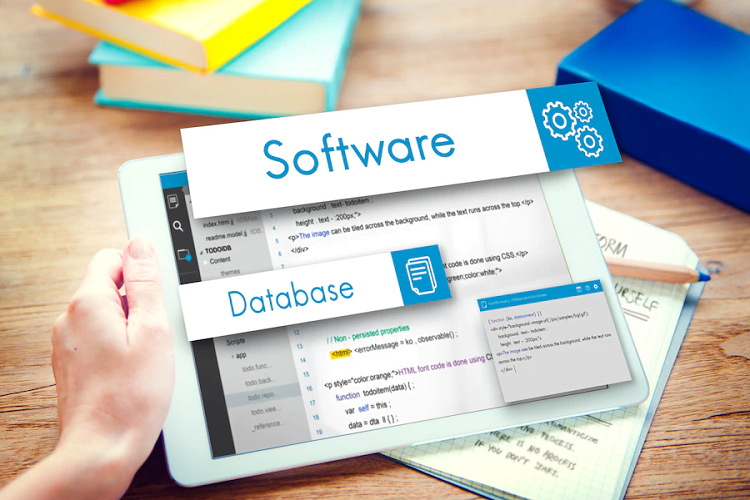Software product development is a winding path to transforming newfound ideas into tools that have a tangible effect on solving real problems. Whether you are a tech entrepreneur in the idea generation phase of a hot new app or an established business leader in the process of expanding your online services, doing it well takes planning and vision.

This article will explore some of the most important aspects of which might make or break your project. These tips run the gamut and serve to highlight everything, from identifying your market to avoiding technical pitfalls to making your software both sustainable and successful.
Software product development is a winding path to transforming newfound ideas into tools that have a tangible effect on solving real problems. Whether you are a tech entrepreneur in the idea generation phase of a hot new app or an established business leader in the process of expanding your online services, doing it well takes planning and vision.
This article will explore some of the most important aspects of which might make or break your project. These tips run the gamut and serve to highlight everything, from identifying your market to avoiding technical pitfalls to making your software both sustainable and successful.
11 Key Factors to Consider for Software Product Development
Understanding the Market and User Needs
The essential passport to successful software product development process begins with market research. You should find out whether there is a real demand for your product. Begin by understanding your target audience Who are they? What are their daily pain points? Surveys, interviews, and competitor analysis are some of the tools that help reveal the gaps in the market.
Consider these aspects:
- Competitive Landscape: Analyze existing solutions. What features do competitors offer, and where do they fall short? This helps you differentiate your product.
- User Personas: Create detailed profiles of potential users, including demographics, behaviors, and preferences. This ensures your software aligns with their expectations.
- Market Trends: Stay updated on emerging technologies like AI integration or cloud computing. Ignoring trends could render your product obsolete quickly.
It is cost effective to test your idea early on by creating MVPs are prototypes. As an example, most successful apps such as Dropbox started with simple videos that were used in testing interest prior to full development. When it comes to software product development, failure to practice this step will end up bringing in costly product adjustments in the future.
Strategic Planning and Roadmapping
Strategic planning is vital once you are sure of the need. This step describes product creation. A roadmap is a roadmap that serves as a blueprint with timelines, milestones, resources.
Key considerations include:
- Scope Definition: Clearly define what the product will and won’t do. Scope creep, where features keep adding up, is a common pitfall that delays launches.
- Timeline and Milestones: Set realistic deadlines based on team capacity. Use tools like Gantt charts to visualize progress.
- Risk Assessment: Identify potential risks, such as technical challenges or market shifts, and plan contingencies.
Agile in software product development is usually superior to a waterfall product development because of its flexibility. Teams can make improvements based on feedback, limiting the need to create something that people will not use.
Budgeting relates to planning as well Forecast development, marketing and upkeep costs. Underestimation can create half-baked stuff or can meddle with quality.
Choosing the Right Technology Stack
The Tech stack is the core of your software. The wrong tools may cause scalability problems or result in some heavy maintenance activities later.
Factors to weigh:
- Frontend and Backend Technologies: For user interfaces, options like React or Vue.js offer responsiveness. On the backend, Node.js or Python with Django provide robust support.
- Database Choices: Decide between SQL (like PostgreSQL) for structured data or NoSQL (like MongoDB) for flexibility.
- Scalability Needs: If you anticipate growth, cloud services from AWS or Azure can handle increased loads without overhauling your setup.
Interoperability and futureproofing are essential. Make sure the stack integrates well with third-party services and adapts to technological changes. In software product development, open-source tools have the advantage that they usually cost less, but they must be accompanied by verified community support.
Stack selection should also take security concerns into account. Encryption and authentication are built-in features that can help avoid vulnerabilities.
Design and User Experience Focus
Software that is great not only functions but also is easy to do and is a pleasure to employ. User experience (UX) and user interface (UI) design can be critical factors in adoption.
Essential points:
- User-Centric Design: Involve users in design iterations through wireframes and prototypes. Tools like Figma facilitate collaboration.
- Accessibility: Ensure compliance with standards like WCAG, making your product usable for people with disabilities.
- Mobile Responsiveness: With most users on mobile, design for various screen sizes and devices.
A bad user experience may cause a high churn. This is the case with an app like Uber, where a smooth ride may result in loyalty. With software products, the cost of making design investments early on will pay off in satisfaction, and long-term retention by users.
Development Process and Methodologies
The actual building phase demands a structured approach. Agile, Scrum, or Kanban frameworks help manage workflows.
Considerations here:
- Team Composition: Assemble a mix of developers, designers, and testers. Diverse skills foster innovation.
- Version Control: Use Git for tracking changes and collaboration.
- Integration and Deployment: Implement CI/CD pipelines for automated testing and releases.
DevOps practices bridge development and operations, speeding up delivery. In software product development, regular code reviews catch issues early, maintaining quality.
Security and Compliance Measures
In an era of data breaches, security can’t be an afterthought. Build it into every stage.
Key elements:
- Data Protection: Use encryption for sensitive information and implement secure authentication like OAuth.
- Compliance Standards: Adhere to regulations such as GDPR or HIPAA, depending on your industry.
- Vulnerability Testing: Conduct regular penetration testing to identify weaknesses.
Neglecting security can result in legal troubles or loss of trust. Software product development must prioritize ethical data handling to build long-term credibility.
Testing and Quality Assurance
Thorough testing ensures your product works as intended across scenarios.
Approaches include:
- Unit Testing: Check individual components.
- Integration Testing: Verify how parts work together.
- User Acceptance Testing (UAT): Let real users test for usability.
Automated tools like Selenium speed up repetitive tests. In software product development, aiming for high test coverage minimizes post-launch bugs.
Beta testing with a small user group provides valuable feedback before full release.
Launch Strategies and Marketing
Launching isn’t the end; it’s a new beginning. Plan for visibility and user acquisition.
Strategies to consider:
- Go-to-Market Plan: Define pricing, distribution channels, and promotional tactics.
- SEO and App Store Optimization: Optimize search engines and app stores to increase discoverability.
- User Onboarding: Create smooth tutorials to help new users get started quickly.
Post-launch, monitor analytics with tools like Google Analytics to track engagement. Software product development succeeds when marketing aligns with product strengths.
Maintenance and Iterative Improvements
Software evolves. Plan for updates, bug fixes, and feature additions.
Ongoing considerations:
- Monitoring Tools: Use Sentry or New Relic for real-time issue detection.
- User Feedback Loops: Incorporate reviews and surveys to guide improvements.
- Scalability Upgrades: As users grow, enhance infrastructure accordingly.
Regular updates keep your product relevant. In software product development, viewing maintenance as an investment prevents obsolescence.
Budgeting and Resource Management
Financial planning underpins everything. Allocate budgets wisely across phases.
Tips:
- Cost Breakdown: Factor in salaries, tools, and unexpected expenses.
- Funding Sources: Explore investors, grants, or bootstrapping.
- ROI Projections: Estimate returns to justify expenditure.
Efficient resource use, like outsourcing non-core tasks, can stretch budgets. Software product development demands balance quality with cost constraints.
Team Dynamics and Collaboration
People power the process. Foster a collaborative environment.
Aspects to nurture:
- Communication Tools: Slack or Microsoft Teams keep everyone aligned.
- Remote Work Policies: If distributed, ensure tools support seamless interaction.
- Training and Development: Invest in skill-building to keep the team sharp.
Strong teams deliver better results. In software product development, culture impacts innovation and retention.
Wrapping It Up: The Path to Success
The process of software product development is an exercise that requires navigating a lot of factors, beginning with research into after sales services. When focusing on the market requirement, establishing strategic plans, technology selection, design quality, security design, testing, launching, maintenance, financial aspects, and team dynamics, you put into place a product that is not only going to launch successfully but is also going to last.
You do not build software because it is a worthwhile goal; you do it to create some value that people can identify with. Tackle every step carefully and you will have higher chances of transforming a good idea into a great product.
FAQs
What is the first step in software product development?
Market research is the first step to verify your idea and gain insight on user needs to make sure you have a demand before investing in it heavily.
How long does software product development typically take?
Depending on their complexity, some apps could take 3-6 months, whereas enterprise solutions could take 1-2 years or more.
Why is agile methodology popular in software product development?
Using Agile, you can be flexible, iterative, and adapt quickly based on feedback, which is less risky than a rigid approach.
What are common mistakes to avoid in software product development?
Ignoring user feedback, security concerns, lack of scope control and underestimating costs are some of the common pitfalls that often kill projects.
How can I ensure my software product is scalable?
Use a flexible technology stack, design with modularity in mind and plan to support cloud integration early to allow growth to be handled efficiently.


